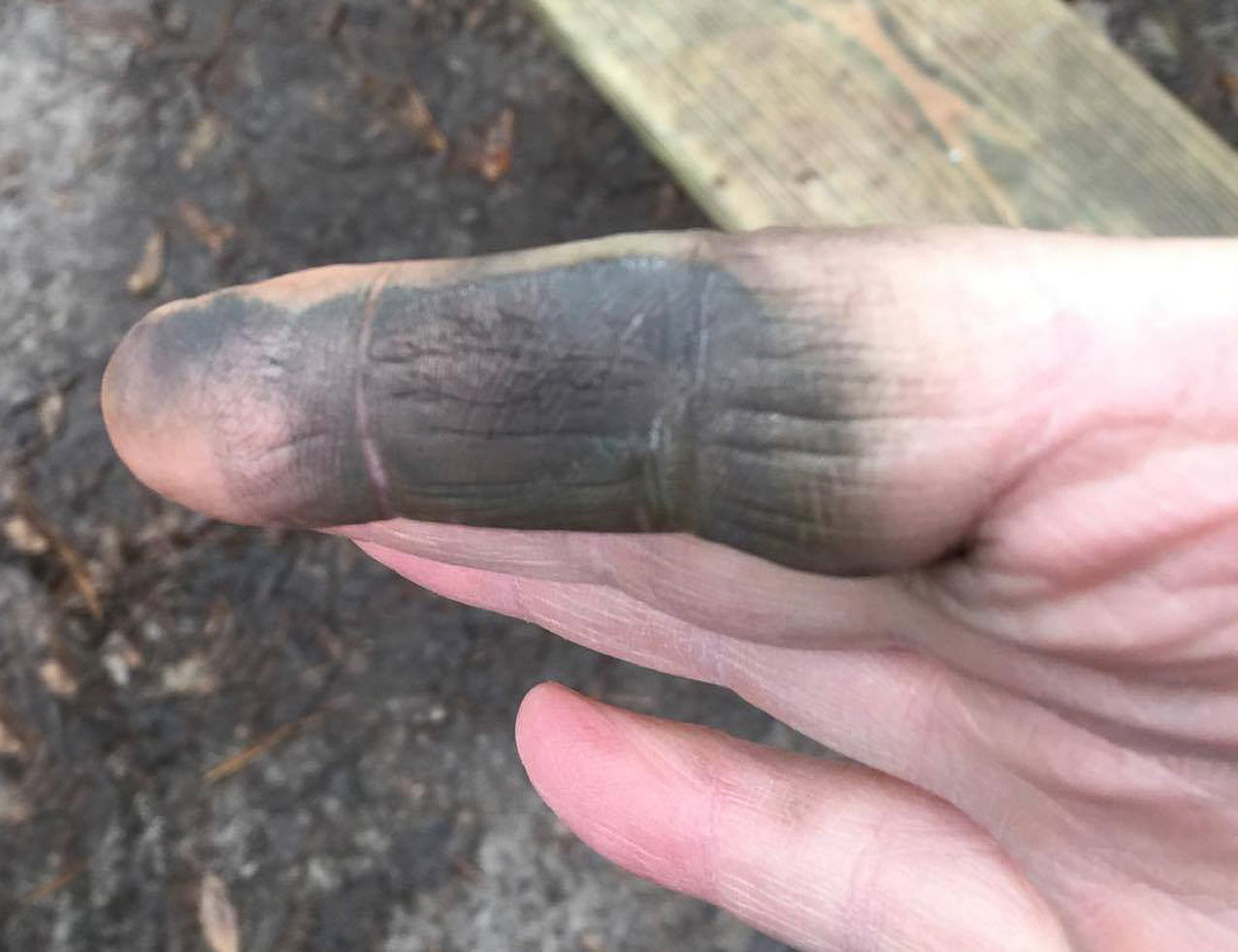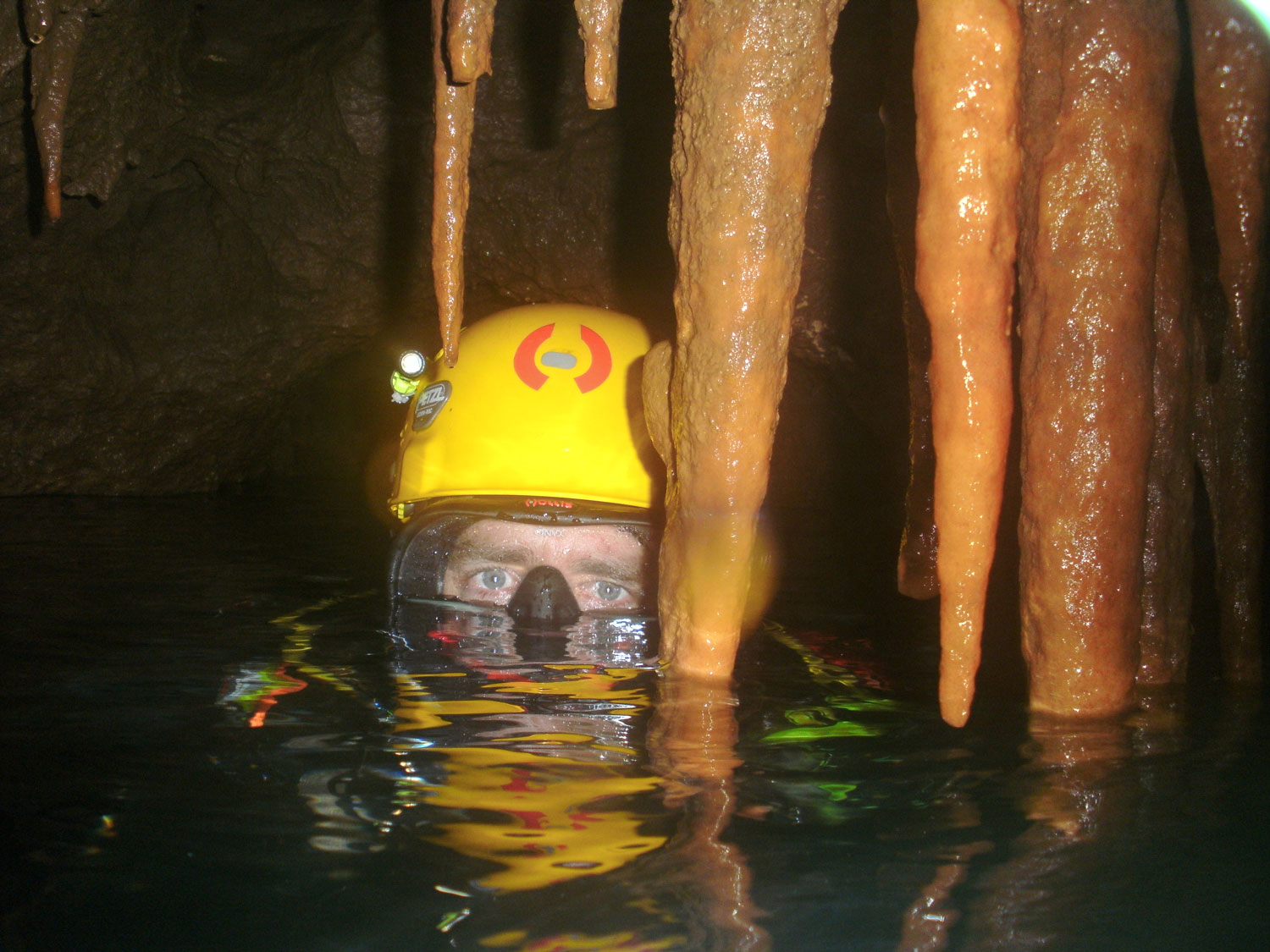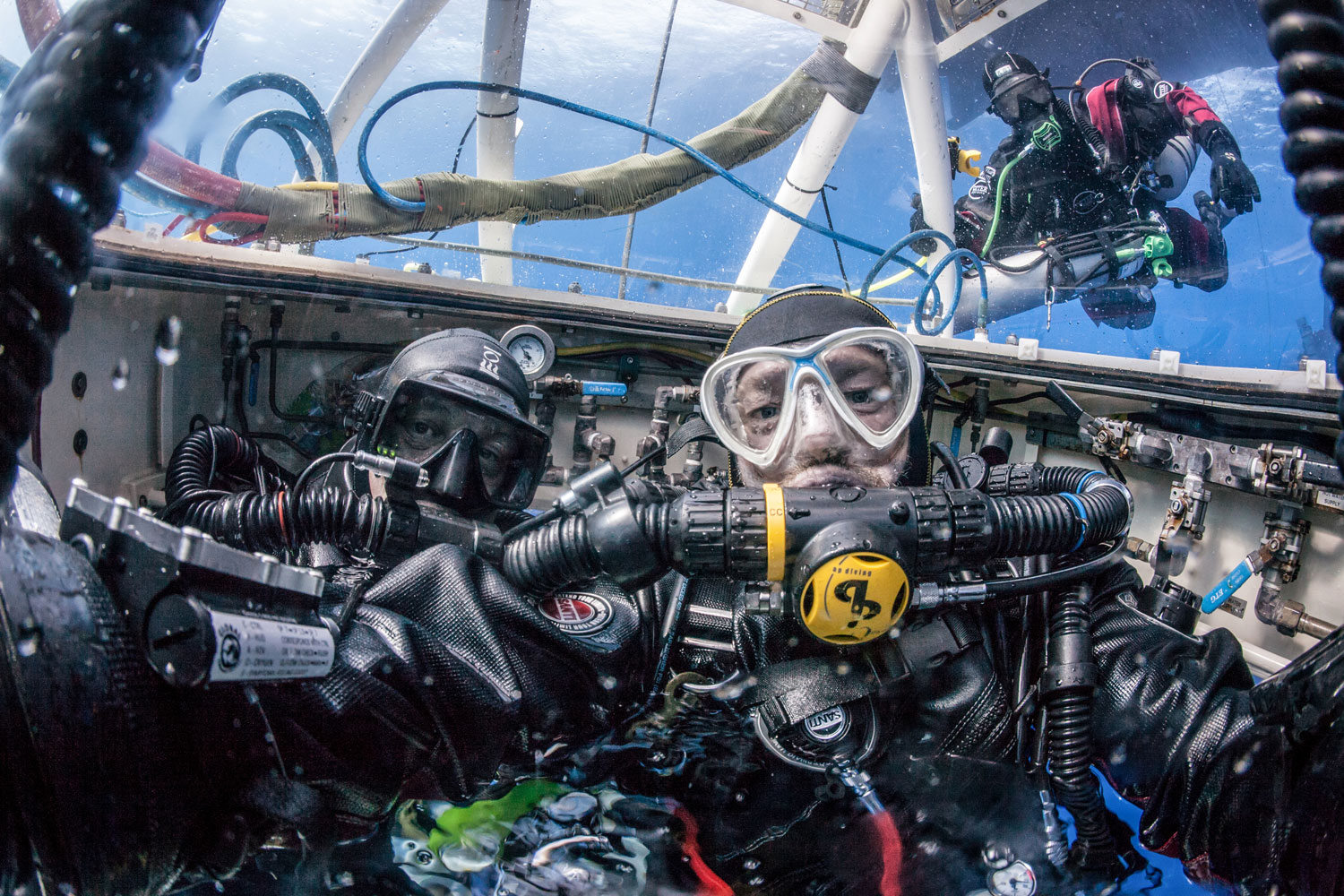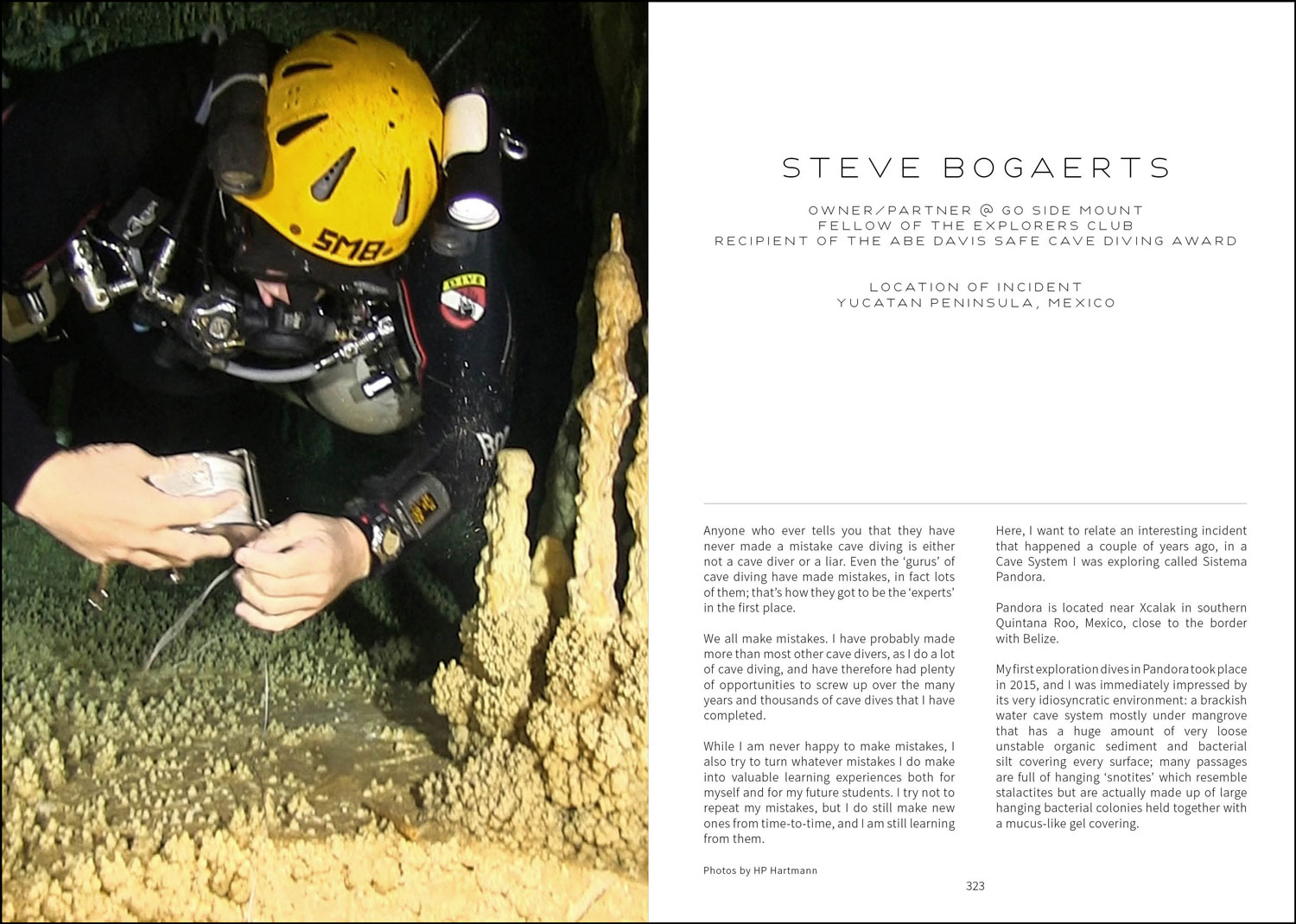Diving inspiration
Could It Happen To You? You Betcha!
Stratis Kas’ new book “Close Calls”—a collection of 68 gripping, personal stories by high profile tech divers about incidents that nearly cost them their lives—is now out on the market and getting rave reviews. Incidents discussed in the book include entanglement, getting lost in caves, running out of gas, deep air diving, DCI, equipment failures, bad gas, an oxygen explosion, hypoxia, hyperoxia, hypercapnia and more.
“My intent was simple,” Kas, who is a Greek cave instructor and filmmaker explained. “If high profile divers and industry leaders were willing to share their own mistakes and lapses of judgement, many of which nearly cost them everything, it would help rank-and-file divers realize that they are fallible and subject to similar errors, and hopefully make them safer divers.” Italian explorer Edoardo Pavia and myself, both contributed stories, and assisted Kas with the project.
Fifty-percent of profits from the book will be donated to DAN Europe’s Claudius Obermaier Fund, a charitable fund which helps divers and their families who find themselves in need. You can order the book here: https://stratiskas.com/closecalls/
Here are a few excerpts from the book. Buckle up your harness and dive right in!
Steve Bogaerts
Owner/Partner @ Go Side Mount
Fellow Of The Explorers’ Club
Recipient Of The Abe Davis Safe Cave Diving Award
LOCATION OF INCIDENT: Yucatan Peninsula, Mexico
On my return journey, I ran into an area of almost zero visibility close to the bedding plane, which was a surprise, as I felt I had passed it cleanly on the way in. Slightly puzzled, I moved to touch contact on the line, pushing my scooter in front of me.
It quickly became apparent why the visibility was so bad as the line disappeared into the sediment, indicating that a tie-off point had broken while I had been diving and buried both itself and the line attached to it deep in the silt.
Not the first time had this happened in this particular cave and, whilst it is annoying having to fix the line and tie offs, usually it is not a big deal. This, however, was obviously a more serious collapse and in a relatively bad location.
As I moved forward, the line ran at a steep angle down into the silt, and within a few meters, my left arm was fully extended holding onto the line, and I was buried up to my left shoulder in the silt with my head turned all the way to the right to keep my face and the second stage I was breathing from out of it to prevent it becoming clogged. I physically could not go any further along the line unless I buried myself completely in the silt, and I still could not reach the tie off point!
By pulling on the line, I could feel the weight of the stalactite it was attached to, but it was much too heavy to pull up, and I was concerned about breaking the line, which was as taut as a piano wire.

Randy Thornton
Cave Diver/Instructor Trainer/Explorer/
Dive Equipment Designer
LOCATION OF INCIDENT: Peacock Springs, Florida, U.S.A.
As is my usual practice, I had prepped my unit the night before, including scrubber fill, cylinder top offs, battery charging, leak tests, flapper valve tests, checked my calibration, etc.
Everything looked 100% good to go. Upon arriving at the dive site the next morning, I placed my CCR on the tailgate of my truck and proceeded to go through my secondary checklist prior to dressing for the dive—checking my O2 cells, checking O2 and dil pressures, pulling a negative and a positive, etc. As part of my secondary checklist, I turned on my O2 gas. Strangely, I could hear what sounded like a small leak escaping from somewhere in the vicinity of the O2 first stage. I put my fingers down there to see if I could feel precisely where the leak was coming from; I thought I could feel it, but couldn’t identify the exact location.
At that point, I decided that I needed to remove the reg from the tank valve so I could inspect it more closely. In order to do so, I needed to depressurise the lines, so I pushed the O2 manual add valve to relieve the pressure.
That’s when it happened! Kaboom!
The noise was incredible and at first I wasn’t sure if all of my body parts were still intact.
After I got my wits about me, I sprinted away from my unit in fear that perhaps the tank was going to blow or even worse, perhaps my truck might go up in flames! After a quick inventory of my body parts, I seemed to be no worse for wear, other than a burned finger that was now black and had Delrin embedded in its skin!
After several minutes of dealing with the shock of an explosion in my proximity, I started to investigate what had happened.
Upon closer examination of my unit, I discovered that the O2 MAV had exploded, the button was missing, and it had melted both inside and (partially) outside.


Mike Young
Owner @ Kiss Rebreathers / Cave Explorer
LOCATION OF INCIDENT: Yucatan, Mexico
We were pushing a cave system in the Yucatán. Dives were getting longer and longer. My dive buddy and I were using semi-closed rebreathers on nitrox 32. We had a custom scooter that would run off our video light batteries.
We started our dive and ran our scooter for about 45 minutes, to the point we were planning to ‘drop’ it. Two of us were being pulled by one scooter. We swam another 20-25 minutes and came to an air bell we had found the day before during an eight-hour dive. We were prepared for this and brought with us food and Gatorade. I was starting to get queasy, so I didn’t eat all my snacks.
After another 20-minute swim we started laying line. Brendan laid line as I surveyed. After about 137 m/450 ft I felt worse and called the dive. Brendan didn’t question it and just turned. We got back to the air bell. I was in a pretty bad shape. Really queasy, barely holding my food down. I was very weak.
We stayed there for about 30 minutes until I started feeling better. As we were swimming back I felt pretty good, but I was so happy to see our scooter. On our way back, I bailed out a few different times. Each time I felt bad instantly, so I would go back on the loop. I was feeling horrible, weak, lethargic and on the verge of throwing up.
“Not in the loop,” I repeated in my head over and over. The exit was so far away it was disheartening. I started picking out attainable goals. Just make it to that corner. Make it to intersection five. Make it to intersection four. Soon I was starting to go from knot to knot on the line. About 77 m/250 feet from the exit my peripheral vision started getting fuzzy and I was seeing black. Then our scooter died. I kicked and bam! My vision closed-in to just small holes. There was a stalagmite about 1 m/3 ft from me. I reached for it and kicked. Everything went black.
My hand hit the stalagmite. I grabbed it and held on for a few breaths until my vision started clearing again. I motioned for Brendan to come next to me. I grabbed his arm and yelled "swim!". He couldn’t figure out what was wrong and said “what?”
I yelled again "swim!", as loud as I could, and so he did.


Leigh Bishop
Deep Shipwreck Explorer
LOCATION OF INCIDENT: North Atlantic
In classic English slang and in the words of the good Lord…. I f***ing shat myself.
My expression of relief changed to sheer panic quicker than Katy Perry changes outfits on stage! A gathered group of onlooking divers took the incident in with a degree of amusement as I frantically ripped the rebreather loop from my mouth whilst my other hand hunted for a regulator that wasn’t where it should be. Of course, I’d just used it to blow the second lift bag but hadn’t yet stowed it back into the position where, in an emergency, I always knew it to be.
I was on my knees on the seabed at almost 80 m/262 ft, with no air. Not great.
With what could, in hindsight, be classed as a spot of luck, but certainly didn’t seem so at the time, one of the amused onlookers pushed his own regulator into my mouth and purged gas through it so violently that the seawater within was forced into my esophagus causing me to almost drown there and then! “None of this is good,” I thought. “Absolutely none of it. Totally dreadful,” I thought.
Another diver, in a kind, gentleman-like manner, found my bailout regulator on my behalf, and off I shot along the seabed in the rough direction of the shot line, apparently faster than a Polaris missile!
Even before I reached the shotline leading to the surface, my small bailout cylinder was half-empty, and I was breathing what was left at a rate of easily three, if not four, times faster than I normally would have.
My sphincter pulsed and I swear the ‘turtle’s head’ was showing. I believe my mind at the time told me to head for the shot line, as it was programmed from British wreck diving and deep expedition diving to think of it as a place of safety, rather than being alone mid-water.
With the deep North Atlantic visibility good, I soon found the shotline, that so sought-after gateway to the surface. My VR3 wrist-mounted computer was a prototype that I was testing with beta software programmed for deep stops. In a kind way it told me “Leigh? A deep stop is required.” I can still remember to this day what I said in my head in reply to that VR3, like I was actually talking to a human: “Not interested. Go F*** yourself!”


Check out this DAN Europe Blog post for insights into the making of the book: A Behind The Scenes Look Into The Making of “Close Calls”.



